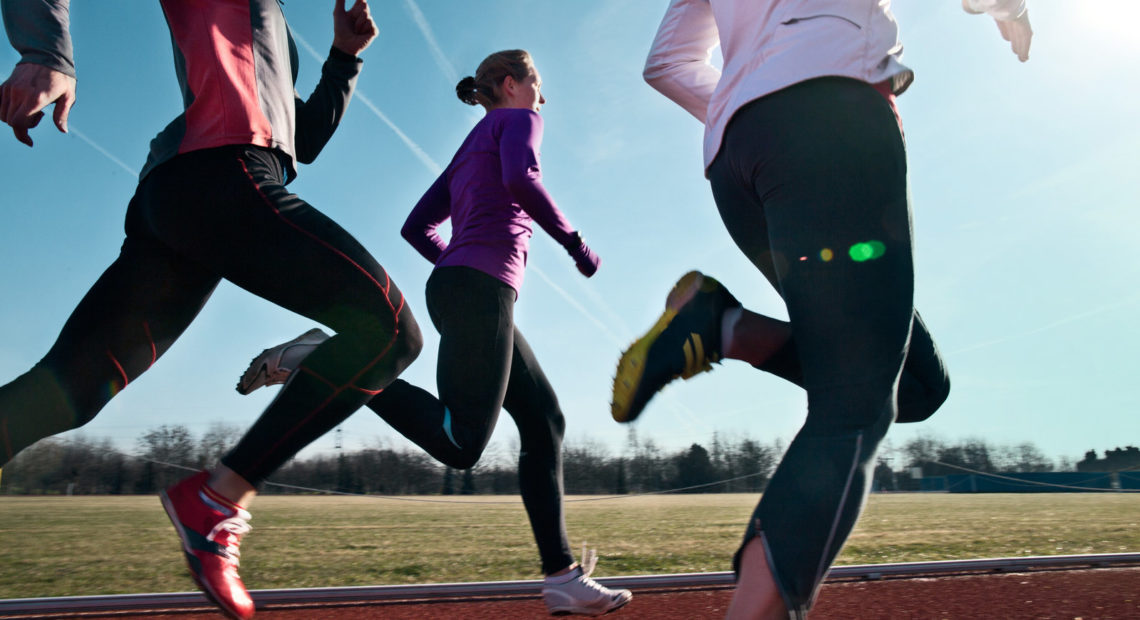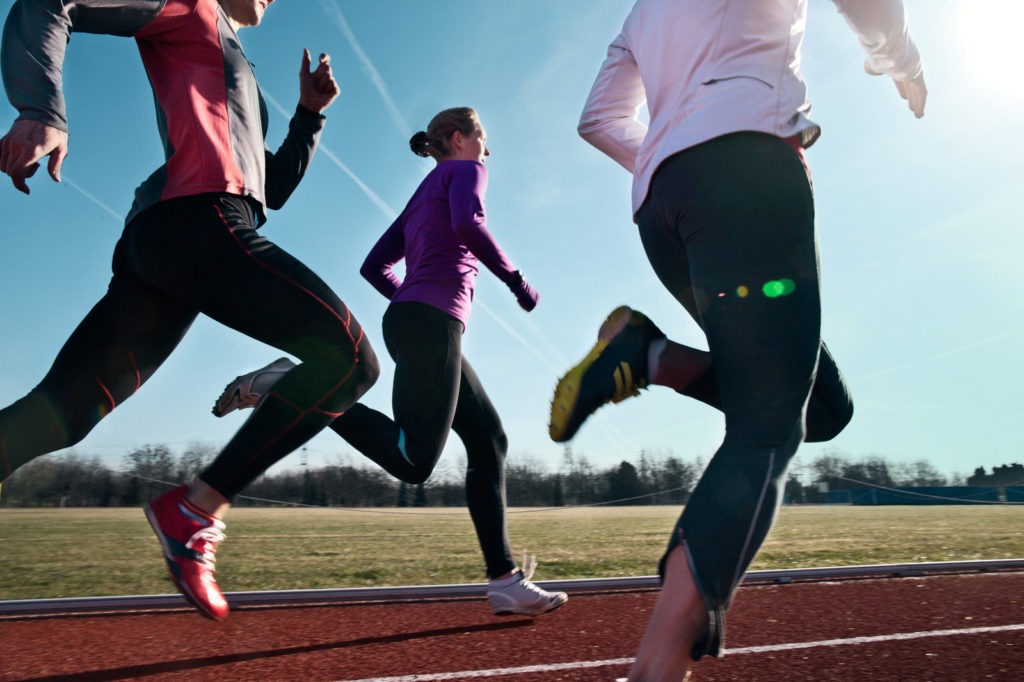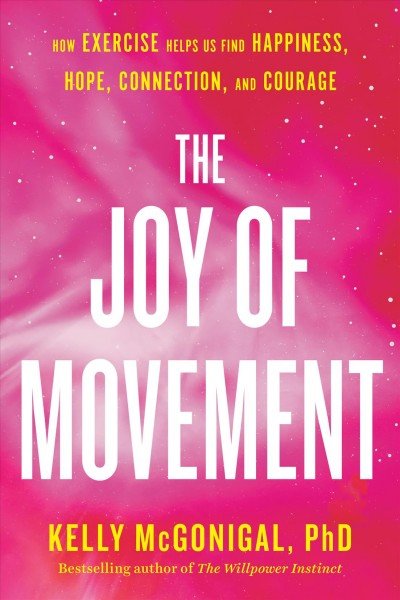
Hope, Happiness And Social Connection: Hidden Benefits Of Regular Exercise
BY STEPHANIE O’NEILL
If ever there was a time to up your fitness game, the arrival of the new year and the new decade is it. But after the allure of the new gym membership wears off, our sedentary habits, more often than not, consume our promise of daily workouts. It doesn’t have to be this way, says health psychologist and author, Kelly McGonigal, PhD.
In her new book, The Joy of Movement: How Exercise Helps Us Find Happiness, Hope, Connection, and Courage, the Stanford University lecturer offer new motivation to get moving that has less to do with how we look, or feeling duty-bound to exercise, and everything to do with how movement makes us feel. She shares with readers the often profound, yet lesser-known benefits of exercise that make it a worthy, life-long activity whether you’re young, old, fit or disabled.

In a new book The Joy of Movement: How Exercise Helps Us Find Happiness, Hope, Connection, and Courage, author Kelly McGonigal argues that we should look beyond weight loss to the many social and emotional benefits of exercise.
CREDIT: Boris Austin/Getty Images
“I want them to understand [exercise] in a different way than the usual conversation we always have about weight loss, preventing disease and making our bodies look a certain way,” McGonigal tells NPR.
Among its many life-altering rewards: the generation of hope, happiness, a sense of purpose, greater life satisfaction and rewarding connections with others.
“These benefits are seen throughout the lifespan,” she writes. “They apply to every socioeconomic strata and appear to be culturally universal.”
And they aren’t activity-specific and they don’t require you to be a super-athlete. Whether you run, swim, dance, bike, weight-lift, do yoga or team sports — it doesn’t matter, McGonigal says — moderate physical activity does far more than make us physically stronger and healthier.
Here are five of the ways movement can help you enjoy life.
1) Activate pleasure
During exercise, McGonigal explains, our brains release neurotransmitters — in particular dopamine and endocannabinoids — that can generate a natural high similar to that of cannabis, or marijuana.
“Many of the effects of cannabis are consistent with descriptions of exercise-induced highs, including the sudden disappearance of worries or stress, a reduction in pain, the slowing of time and a heightening of the senses,” she writes.
And while exercise activates the same channels of the brain’s reward system that addictive drugs do, she explains that it does so “in a way that has the complete opposite effect on your capacity to enjoy life.”
Exactly how it all works, isn’t fully understood.

The Joy of Movement:
How Exercise Helps Us Find Happiness, Hope, Connection, and Courage by Kelly McGonigal
“But the basic idea is that your brain will have a more robust response to everyday pleasures,” she says, “whether it’s your child smiling at you, or the taste of food or your enjoyment of looking at something beautiful — and that’s the exact opposite effect of addiction.”
2) Become a “more social version of yourself”
In a chapter on the collective joy of exercise, McGonigal explains how endorphins — another type of neurotransmitters released during sustained physical activity — help bond us to others. It’s a connection, she writes, that “can be experienced anytime and anywhere people gather to move in unison,” be it during the flow of yoga class, during the synchronicity of team rowing, while running with friends or while practicing tai chi with others.
And it also helps explain why those with whom we participate on teams or share fitness friendships often feel like family, she says. Endorphins help strengthen ties to individuals we’re not related to, which helps us build extended families and important social networks that help stave off loneliness and social isolation.
Of course, humans can build bonds through sedentary activities as well, McGonigal says.
“But there’s something about getting your heart rate up a little bit and using your muscles that creates that brain state that makes you more willing to trust others — that enhances the pleasure you get from interacting with others that often makes you this more social version of yourself,” she says.
3) Heal depression
In a section on “green exercise,” McGonigal discusses the positive shifts in mood and outlook reported by those who exercise in nature.
“It actually alters what’s happening in your brain in a way that looks really similar to meditation,” she says. “People report feeling connected to all of life… and they feel more hopeful about life itself.”
Indeed, an Austrian study McGonigal cites found that among people who had previously attempted suicide, the addition of mountain hiking to their standard medical treatment reduced suicidal thinking and hopelessness. Similarly, a South Korean study showed that when forest walks were added to the treatment of middle-aged adults with depression, they moved into remission at a rate three times faster than those who did indoor therapy only.
McGonigal says she heard many similar stories among those she interviewed for the book: “So many people who struggle with anxiety, grief or depression find a kind of relief in being active in nature that they don’t find any other way.”
4) Reveal hidden strength
Even for those who don’t struggle with mental or physical illness, adopting a regular exercise routine can provide powerful transformation. McGonigal shares stories of several women who overcame limiting beliefs through exercise to reveal a new, more powerful self.
“If there is a voice in your head saying, ‘You’re too old, too awkward, too big, too broken, too weak,’ physical sensations from movement can provide a compelling counterargument,” McGonigal writes. “Even deeply held belief about ourselves can be challenged by direct, physical experiences, as new sensations overtake old memories and stories.”
5) A boost for the brain
McGonigal offers insights drawn from research into ultra-endurance athletes and how they survive mentally and physically grueling events designed to last six or more hours.
When researchers at the Berlin-based Center for Space Medicine and Extreme Environments measured the blood of ultra-endurance athletes, they found high levels a family of proteins called myokines, known to help the body burn fat as fuel, to act as natural antidepressants and to provide a possible shield against cognitive decline.
But as she reports, you don’t need to be a super-athlete to experience the benefits of myokines. McGonigal cites a 2018 study that identified 35 of these proteins released by the quadriceps muscles during just one hour of bike riding.
Emerging research, she says, suggests that when exercised, your muscles become “basically a pharmacy for your physical and mental health.”
“If you are willing to move,” she writes, “your muscles will give you hope. Your brain will orchestrate pleasure. And your entire physiology will adjust to help you find the energy, purpose and courage you need to keep going.”
Copyright 2020 NPR. To see more, visit npr.org















